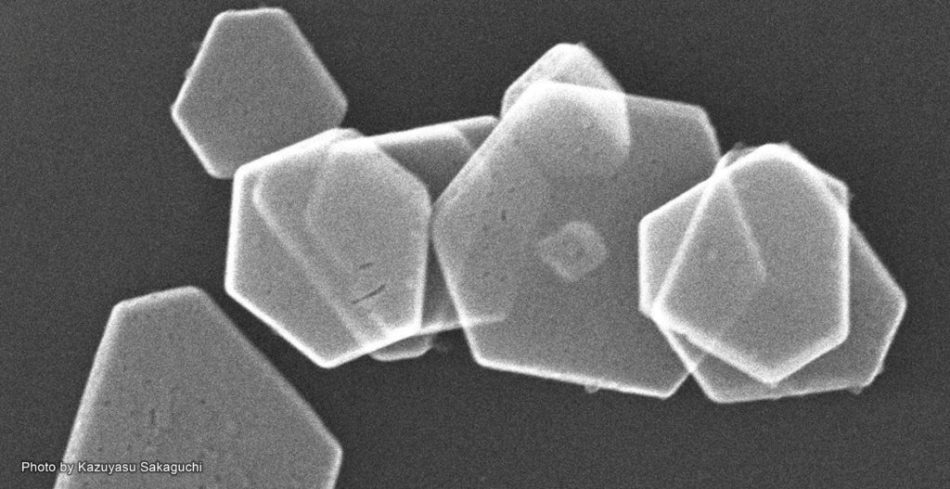May 4 2017
 An electron microscopy image of hexagonal silver nanoplates formed by the biomineralization peptides fused with p53Tet. CREDIT: Photo by Kazuyasu Sakaguchi.
An electron microscopy image of hexagonal silver nanoplates formed by the biomineralization peptides fused with p53Tet. CREDIT: Photo by Kazuyasu Sakaguchi.
An innovative technique that combines tumor suppressor protein p53 and biomineralization peptide BMPep was successful in synthesizing hexagonal silver nanoplates, indicating an effective approach for regulating the nanostructure of inorganic materials.
Accurate regulation of nanostructures is a significant aspect in forming functional nanomaterials. Biomimetic procedures are regarded to be efficacious for synthesizing nanomaterials as biomolecules have the ability to bind with particular targets, self-assemble, and construct complex structures. Oligomerization (i.e. assembly of biomolecules) is a key factor of natural materials forming higher ordered structures.
Specific peptides have the ability to bind with a particular inorganic substance (e.g. silver) and improve its crystal formation. Such a phenomenon known as peptide-mediated biomineralization can be used as a biomimetic strategy for developing functional inorganic structures. Complex inorganic structures can be synthesized by regulating the spatial orientation of the peptides. However, it has been highly difficult to carry out.
A research team headed by Kazuyasu Sakaguchi, a Hokkaido University Professor, has been successful in regulating the oligomerization of the silver biomineralization peptide (BMPep), resulting in the synthesis of hexagonal silver nanoplates.
The researchers used the widely known tumor suppressor protein p53 capable of forming tetramers by means of its tetramerization domain (p53Tet).
The unique symmetry of the p53 tetramer is an attractive scaffold to be used in controlling the overall oligomerization state of the silver BMPep such as its spatial orientation, geometry, and valency.
Professor Kazuyasu Sakaguchi, Hokkaido University
Through the experiments, the researchers were triumphant in synthesizing silver BMPep fused with p53Tet, which led to the formation of BMPep tetramers, thus synthesizing hexagonal silver nanoplates. Moreover, the researchers noted that the BMPep tetramers have improved specificity toward the structured silver surface, evidently controlling the crystal growth direction to enable the formation of hexagonal nanoplates. In addition, the tetrameric peptide functioned like a catalyst in regulating the crystal growth in silver but without consuming the peptide.
Our novel method can be applied to other biomineralization peptides and oligomerization proteins, thus providing an efficient and versatile strategy for controlling nanostructures of various inorganic materials. The production of tailor-made nanomaterials is now more feasible.
Professor Kazuyasu Sakaguchi, Hokkaido University